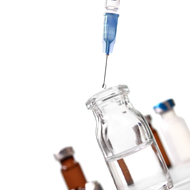
Report provides overview of the options available
A new report has concluded that ‘alternatives have the potential to replace antibiotics in many situations’.
Published by The Pew Charitable Trusts, the report found that alternatives ‘can reduce animal use in agriculture’ and allow antibiotics ‘to be preserved for use when absolutely needed to protect human or animal health’.
‘Focused research and development will help bring promising technologies to the veterinary market and guide their use,’ the report concludes. ‘That, in turn, will help reduce antibiotic use in animal agriculture without endangering animal health, productivity, and welfare.’
The authors also note that alternative products should be considered as one part of a comprehensive herd or flock management programme aimed primarily at the prevention of diseases, rather than curing of infections.
‘An alternative product’s efficacy and cost-effectiveness will be central to farmers’ decisions about whether to use it, and the sharing of experiences and lessons learned is likely to be as important as formal economic analyses,’ the authors continue.
‘Therefore public-private partnerships may be a promising approach for understanding how best to integrate alternative products into overall farm management, as they may allow complementary data from experimental studies and actual use data on commercial operations to be combined and contrasted.’
The Alternatives to Antibiotics in Animal Agriculture report provides an overview of the options available, including vaccines, probiotics and immune modulators. Vaccines are among the most promising and widley used of these alternatives, but prebiotics and probiotics are also in use or currently being investigated.
The work is based on the current body of scientific literature and experts in the United States.



 The RCVS has announced a new version of its 1CPD mobile app, with enhanced features for veterinary surgeons and veterinary nurses to record their continuing professional development.
The RCVS has announced a new version of its 1CPD mobile app, with enhanced features for veterinary surgeons and veterinary nurses to record their continuing professional development.